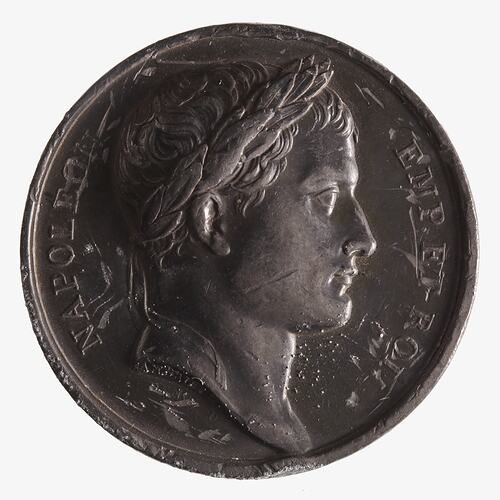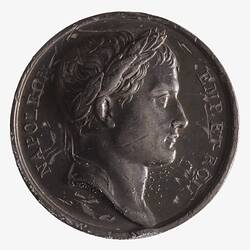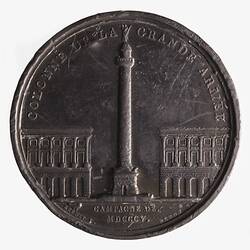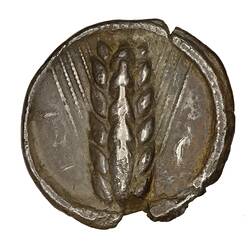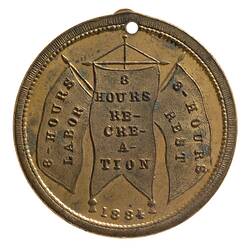Summary
Medal Column of the Grand Army 1805, Issued by France, 1806
Artist: Bertrand Andrieu and Nicholas Guy Antoine Brenet
Minted by Paris Mint
Note: The date 1805 is given on the medal and on the column as it was to commemorate the victories of that year. The medal was first produced in 1806, construction of the column began in 1807 and was completed in 1810.
Other Details: A cast copy obverse and reverse joined
Obverse Description
Laureate head right; around NAPOLEON EMP ET ROI.; on head truncation, ANDRIEU F.
Reverse Description
The Place Vendrome and columm; around, COLONNE DE LA GRAND ARMEE; in exergue, CAMPAGNE DE: / MDCCCV ; near rim in small lettering, BRENET F. DENON D.
Edge Description
Plain
Significance
"This column, intended to be similar to that erected at Rome, to the honor of Trajan, was ordered to be two metres and seventy-three centimetres in diameter, and twenty metres, seventy-eight centimetres in height ... A succession of bas reliefs engraved upon brass plates, commences from the bottom of the shaft, which retrace in chronological order the principal actions of the campaign of 1805; the first plate begins in a point or apex, and represents the sea bounded by the horizon; ascending in a spiral form, it then takes the figure of an elongated triangle, exhibiting the small and then the larger waves, and lastly, the flotilla at Dunkirk; then the passage of the Rhine at various points, by the whole army, on the 25th, 26th, and 27th of September, 1805; a little upon the turn of the pillar, Napoleon and the king of Wirtemberg are seen in interview. On the left, is seen Virtue and Merit in the act of being rewarded, and a dragoon receives the cross of the Legion of Honour from the hands of Napoleon: then appears the representation of the different battles. The 16th plate represents young Dubois, a celebrated fifer; he is seen at the head of his corps. These bas reliefs are divided into compartments, about three feet in length, by three feet eight in breadth, a cordon or spiral garter runs between each of the bas reliefs, and bears the inscription of the action they represent. " Laskey p.119-121
More Information
-
Collection Names
-
Collecting Areas
-
Acquisition Information
Transfer from National Gallery of Victoria (NGV), George McArthur, 15 Mar 1976
-
Date Issued
1805 AD
-
Issued By
-
Artist
-
Artist
-
Previous Collection
-
Series
-
Material
Lead
-
Axis
12
-
Classification
-
Category
-
Discipline
-
Type of item
-
Dimensions
41 mm (Outside Diameter), 40.7 g (Weight)
-
Shape
Round
-
References
Chitty p.39
[Thesis] Lugton, Mary E. 1989. George McArthur of Maldon: his Life and his Book Collection.
[Catalogue] Morrison, Ian. 2003. The Baker of Maldon.
-
Keywords
